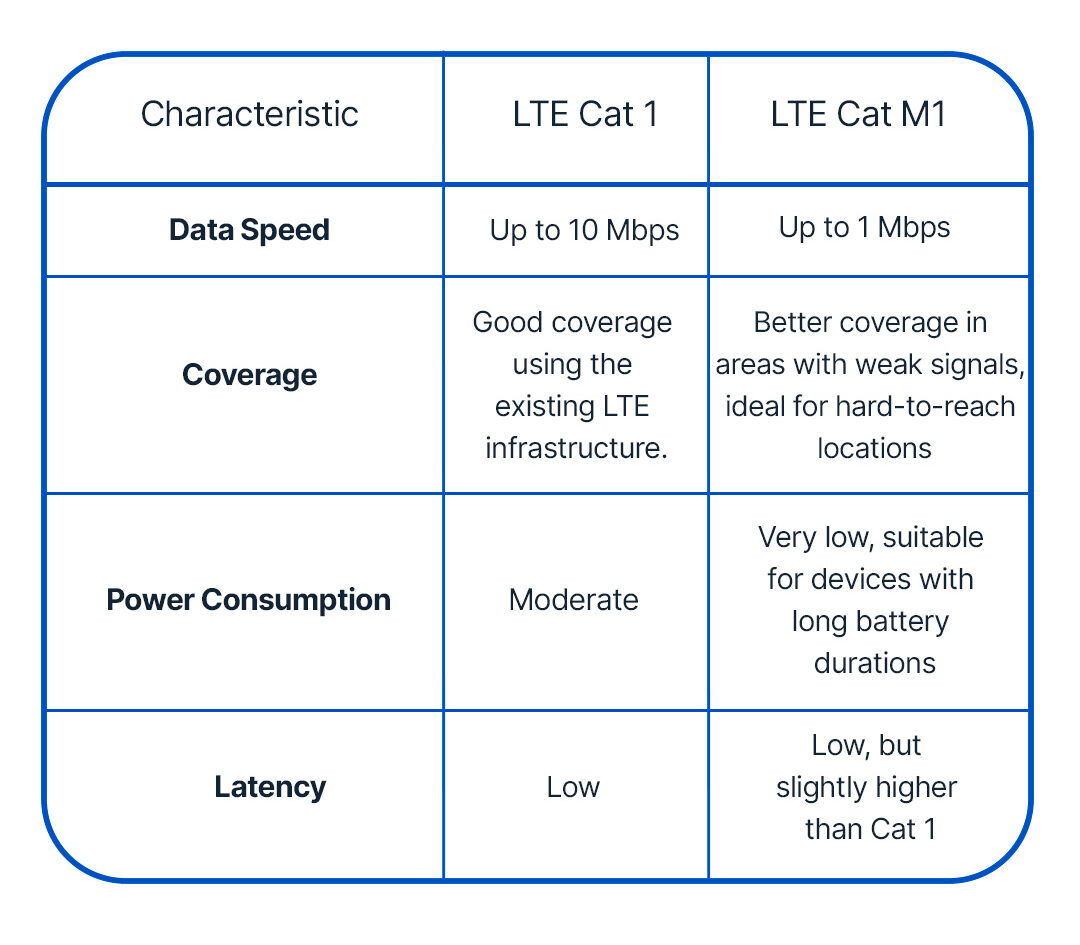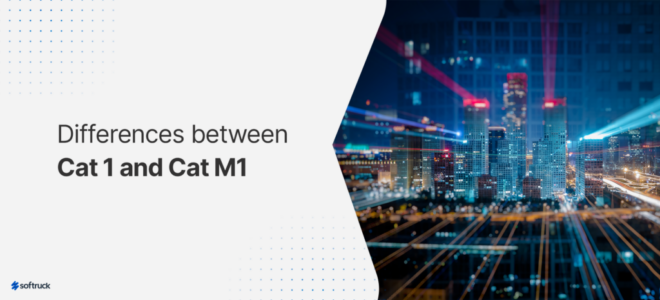Differences between Cat 1 and Cat M1
With the exponential growth of the Internet of Things (IoT), the need for efficient and low-power communication networks has become more evident. In the vehicle tracking sector, LTE Cat 1 and LTE Cat M1 networks have emerged as the main solutions for different IoT device connectivity needs and the imminent obsolescence of 2G networks.
In this article, we will explore the characteristics and differences between Cat 1 and Cat M1, helping you understand which technology best suits your vehicle tracking needs.

Degradation of 2G Networks
In the vehicle tracking sector, the shift from 2G to 4G is not just a trend but a necessity. The 4G technology presents several advantages over previous generations. For instance, it offers significantly higher data transmission speeds, greater network capacity, lower latency, and increased reliability. In short, 4G provides a more precise and reliable vehicle tracking experience.
In the transition from 2G to 4G, LTE Cat 1 and Cat M1 technologies play essential roles due to their ability to offer greater coverage, efficiency, and energy savings. These technologies ensure a smooth migration and better performance for vehicle tracking operations, efficiently replacing obsolete 2G networks.
What are LPWAN networks?
LPWAN (Low Power Wide Area Network) networks are designed to provide long-range connectivity with low power consumption, especially for IoT (Internet of Things) devices. Firstly, these networks are ideal for devices that need to send small amounts of data at regular intervals and operate for long periods on batteries. Additionally, in the context of vehicle tracking, LTE Cat 1 and LTE Cat M1 networks play a crucial role by providing reliable and efficient connectivity for tracking devices.
LTE Cat 1 Network
The Cat 1 network was one of the first LTE categories developed to support IoT devices, being a conventional 4G LTE technology. Moreover, it is designed to offer an ideal combination of speed and energy efficiency, making it suitable for many IoT applications that require moderate data transmission.
Characteristics of LTE Cat 1:
- Data Speed: Up to 10 Mbps download and 5 Mbps upload.
- Coverage: Utilizes existing LTE infrastructure, offering good coverage in urban and suburban areas.
- Latency: Low, allowing for quick responses in time-sensitive applications.
- Power Consumption: Moderate, with reasonable efficiency for IoT devices that do not require ultra-low power.
LTE Cat M1 Network
The LTE Cat M1 network, also known as LTE-M, is an evolution within the 4G LTE standard specifically optimized for “machine to machine” (M2M) communications. It also has wireless communication developed specifically for IoT applications that require greater energy efficiency and extended coverage. In the vehicle tracking sector, for example, LTE Cat M1 is especially ideal for devices that need to operate in hard-to-reach areas or that require long battery durations.
Characteristics of LTE Cat M1:
- Data Speed: Up to 1 Mbps for download and upload.
- Coverage: Better penetration in areas with weak signals, such as basements and buildings.
- Latency: Low, but slightly higher than Cat 1, still suitable for many IoT applications.
- Power Consumption: Very low, ideal for devices that need to operate for long periods on small batteries.
Comparison of LTE Cat 1 and LTE Cat M1

Therefore:
Cat 1 is ideal for vehicle tracking in urban and suburban areas where data speed and low latency are crucial. It is suitable for applications that require a moderate amount of data and where the LTE infrastructure is already well established. It is important to note that in Brazil, Cat 1 is the most chosen by vehicle tracking companies because we have a much more robust Cat 1 signal structure in the country compared to Cat M1.
Cat M1 is ideal for vehicle tracking in rural or hard-to-reach areas where coverage and energy efficiency are more important. It is perfect for devices that require prolonged battery life and operate in challenging conditions. Additionally, it is a more expensive network than Cat 1 and also has little infrastructure in Brazil, so it is not the preferred choice for the process of replacing 4G networks in the country.
Conclusion
Both LTE Cat 1 and LTE Cat M1 are essential technologies for vehicle tracking, each catering to specific needs. Firstly, the choice between Cat 1 and Cat M1 depends on the particular requirements of the application, such as the need for data speed, coverage, power consumption, and latency. In Brazil, Cat 1 has greater coverage; however, depending on the country, such as in Mexico, Cat M1 may certainly be a better choice. Therefore, understanding these differences is crucial to selecting the most appropriate technology and thus ensuring the efficiency and effectiveness of the implemented vehicle tracking solutions.
Visit our website and discover how we can help your company grow with safety and efficiency.

